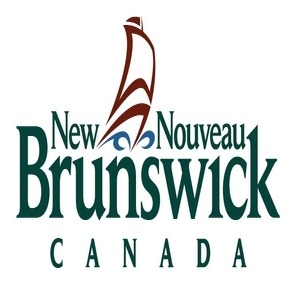Pheromone Trap Maps
The Forest Health Section currently monitors for two insects using pheromone traps. Pheromones are the chemical signal insects created by the insect for communication. Pheromones are used for numerous types of communication. In some species they are used to call other insects together (e.g. aggregation), in some they are used to repel others (e.g. anti-aggregation), in most insects these chemical signals are very specific and unique. Scientists have been able to identify and reproduce these chemicals in many species, allowing us to monitor species presence/absences and relative abundance in pest management. For both
a) spruce budworm
b) hemlock looper
the sex pheromone is emitted by the female to attract male moths. The Province places traps containing pheromone lures for both throughout the province.
At the end of the season, the number of moths found in the traps give an indication of population trends for that season. These result support additional monitoring efforts such as the SBW fall population forecast. The pheromone traps are useful tools, but they only provide a partial picture on populations because in the case of both spruce budworm and hemlock looper the pheromone attract the male moths only.
Each marker on the spruce budworm map represents three traps hung in a 40m spacing array, the value posted is the average of the three traps counted./À l’heure actuelle, la Section de la santé forestière surveille deux insectes au moyen de pièges à phéromone. Les phéromones constituent le signal chimique que les insectes créent pour communiquer. Les phéromones servent pour de nombreux types de communications. Pour certaines espèces, elles servent à rassembler d’autres insectes (p. ex., agrégation); pour d’autres, elles servent à repousser les autres (p. ex., anti agrégation). Chez la plupart des insectes, ces signaux chimiques sont très spécifiques et uniques. Les scientifiques ont réussi à déterminer et reproduire ces signaux chimiques avec nombre d’espèces, ce qui nous permet de surveiller la présence
Simple
- Date ( RI_367 )
- 2023-02-28
- Date ( RI_366 )
- 2023-02-28
- Status
- completed; complété RI_593
- Maintenance and update frequency
- unknown; inconnu RI_543
- Keywords ( RI_528 )
-
- pheromone
- trap
- maps
- traps
- Government of Canada Core Subject Thesaurus Thésaurus des sujets de base du gouvernement du Canada ( RI_528 )
-
- Government information
- Use limitation
- Open Government Licence - New Brunswick (http://www.snb.ca/e/2000/data-E.html)
- Access constraints
- license; licence RI_606
- Use constraints
- license; licence RI_606
- Spatial representation type
- vector; vecteur RI_635
- Metadata language
- eng; CAN
- Metadata language
- fra; CAN
- Topic category
-
- Environment
- Begin date
- 0001-01-01
))
- Reference system identifier
- unknown / unknown / unknown
- Distribution format
-
-
HTML
(
unknown
)
-
KML
(
unknown
)
-
ZIP
(
unknown
)
-
HTML
(
unknown
)
- OnLine resource
-
New Brunswick original metadata (https://gnb.socrata.com)
(
HTTPS
)
Dataset;HTML;eng
- OnLine resource
-
Hemlock Looper
(
HTTPS
)
Dataset;KML;eng
- OnLine resource
-
Spruce Budworm
(
HTTPS
)
Dataset;KML;eng
- OnLine resource
-
Hemlock Looper
(
HTTPS
)
Dataset;ZIP;eng
- OnLine resource
-
Spruce Budworm
(
HTTPS
)
Dataset;ZIP;eng
- File identifier
- 52a1a80e-095f-d773-465b-91ac5b559eb2 XML
- Metadata language
- eng; CAN
- Character set
- utf8; utf8 RI_458
- Hierarchy level
- dataset; jeuDonnées RI_622
- Date stamp
- 2024-05-07
- Metadata standard name
- North American Profile of ISO 19115:2003 - Geographic information - Metadata
- Metadata standard version
- HNAP ISO:19115 - 2003
Overviews

Spatial extent
))
Provided by

 Arctic SDI catalogue
Arctic SDI catalogue